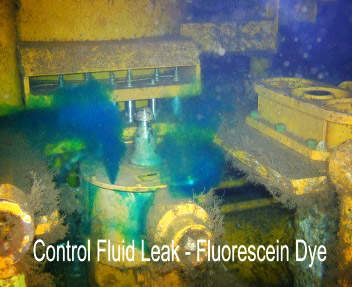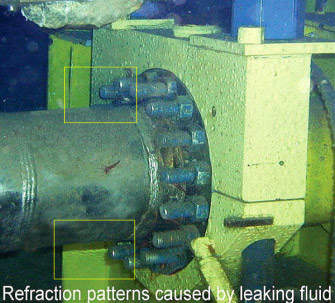Neptune Oceanographics Ltd (NOL) specialises in the provision of subsea leak detection services for the offshore pipeline industry.
Our services help to prevent serious environmental damage by promptly detecting the leakage of hydrocarbons – whether gas or oil – from risers, subsea control systems, water injection systems and other subsea facilities.
In collaboration with the Aquatec Group, NOL have developed a modular subsea pipeline leak detection system that can use one or more types of sensor simultaneously. These include fluorometry, acoustics, hydrocarbon and temperature-based sensors. Neptune’s modular subsea leak detection system is generically named SNIFFIT and is available on a leasing basis backed up by experienced engineers who can provide training, mobilisation and operational support.
FLUORESCENT SUBSEA PIPELINE LEAK DETECTION
NOL have a range of fluorometric sensors that are ‘tuned’ to a number of fluorescent tracer dyes plus versions that directly detect hydrocarbons in the form of crude oils, lubricating oils and hydrocarbon based control fluids without the need for dyes. They are capable of detecting very small leaks and have been used successfully for a number of years by oil companies and offshore operators worldwide.
Recently introduced is a ‘Long Range’ fluorometric dye detection system that can detect leaks at distances of up to 10m or more. The system sensors have two forward facing ‘tuned’ light sources (like two torches) each producing separate beams of excitation light. One beam spreads to about 40cm diameter at 3m distance and the other to about 5cm diameter at 3m but at much higher intensity. Fluoresced light generated in the leak fluid is detected by a sensor mounted between the two light sources. The purpose of two excitation beams is to make leak detection quick and efficient. The wider angle beam detects the presence of dye and a general direction in relation to the ROV and the narrow intense beam allows a more detailed indication of leak location. By mounting the sensor on the ROV manip, quick and easy scanning for leaks is achieved without needing to consider tidal flow direction to ‘capture’ leaked fluid.
The sensors can detect leaks of fluid that contain very low concentrations of most of the commonly used fluorescent tracer dyes such as Fluorescein, Roemex RX-9022, Rhodamine, Castrol SFP dye, etc. and, using the UV version, detect crude oils, lubricating oils and hydrocarbon based control fluids. Other significant advantages of the ‘Long Ranger’ include riser inspection at safe working distances and the ability to detect leaks within structures where ROV access is not possible.
During 2007 Neptune Oceanographics will phase in their latest version of the ‘Long Ranger’ family of leak detection sensors that potentially have the ability to detect fluorescent dyes and crude oil, etc. at distances of up to 20m from the leak.
ACOUSTIC SUBSEA PIPELINE LEAK DETECTION
NOL have developed an acoustic leak detection sensor that plugs directly into the SNIFFIT system. The sensor, which may be diver-held or mounted in an ROV manipulator, incorporates a directional hydrophone that detects ultrasounds that are generated by fluid leaking through a small hole under pressure. The system can operate as stand alone or simultaneously with a fluorometric sensor and includes noise filters that reduce the effects of ambient and mechanical noise from the ROV or support vessel. The sensors are tuned to detect in the range of frequencies known through experimental verification to be emitted by high pressure leaks through small apertures.
The acoustic method is used where fluorescent tracer dyes are not present and is ideal for fast leak detection surveys on long pipelines. Detection distances will depend on the pressure difference across the leak as this influences the sound amplitude. Normally leaks will be detected at distances of 50m or more.
SUBSEA HYDROCARBON LEAK DETECTION SENSORS
The SNIFFIT system can also incorporate a methane sensor. This sensor is used to detect the presence of methane and other hydrocarbon gases in water. Our main application for the technology is detecting leaks from operating subsea gas pipelines and installations but it can also be used for seabed hydrocarbon seepage measurement, marine accident investigations and forensics.
SUBSEA LEAK DETECTION USING TEMPERATURE DIFFERENTIAL
Under some circumstances such as water injection flow lines, leaks can be identified using the temperature difference between the surrounding seawater and the water leaking from the flowline. Neptune, in collaboration with Aquatec, has developed differential temperature sensors that can be interchanged or added to other SNIFFIT system sensors. The sensors comprise fast, high precision thermistors connected through the Neptune leak detection system to the ROV umbilical for onboard display and recording.



